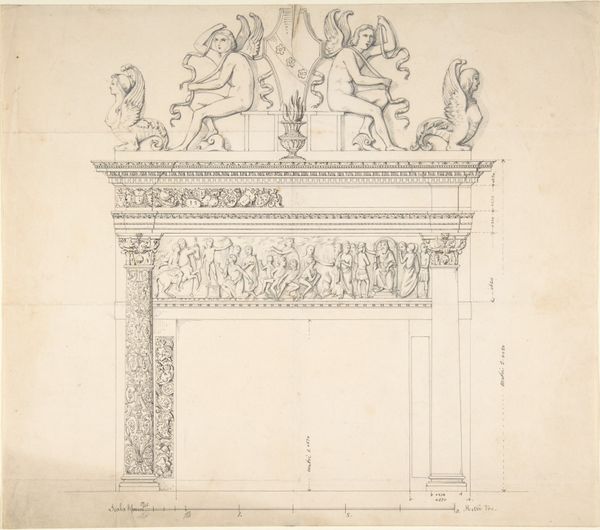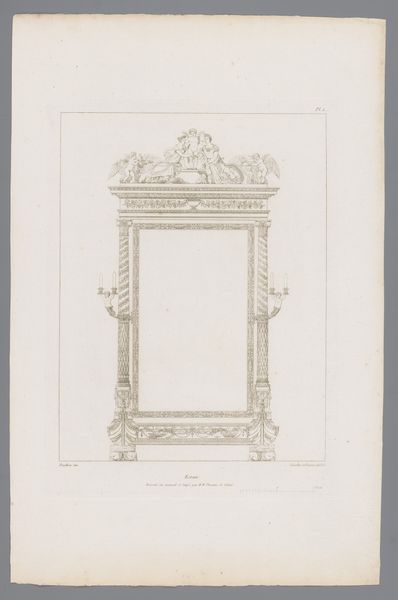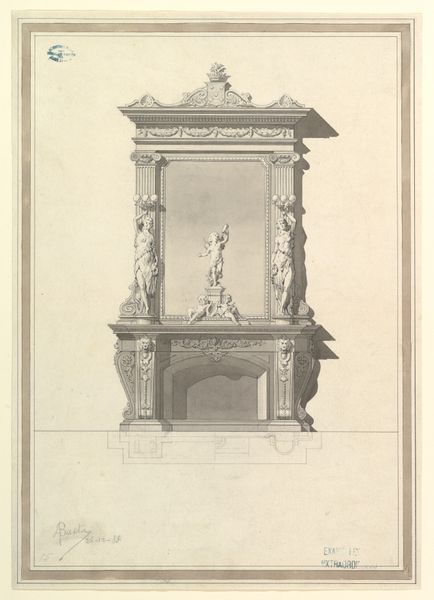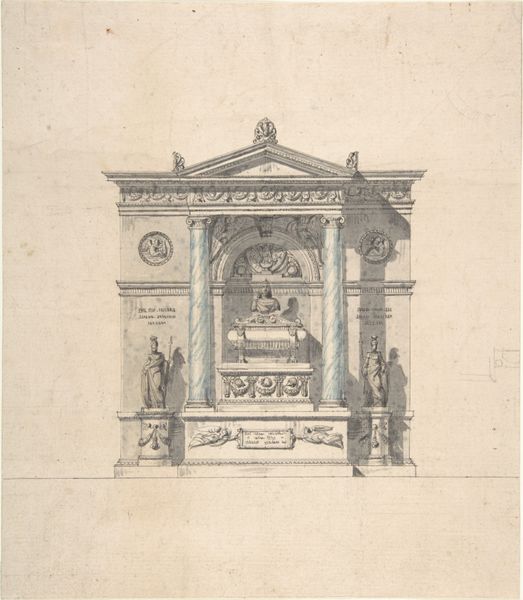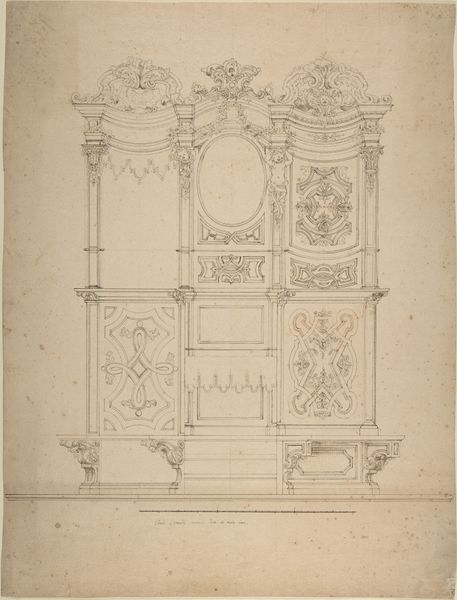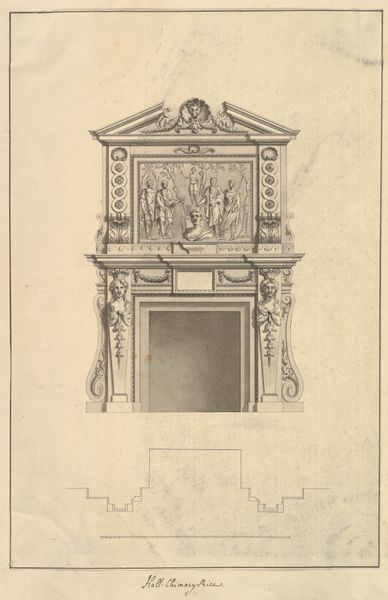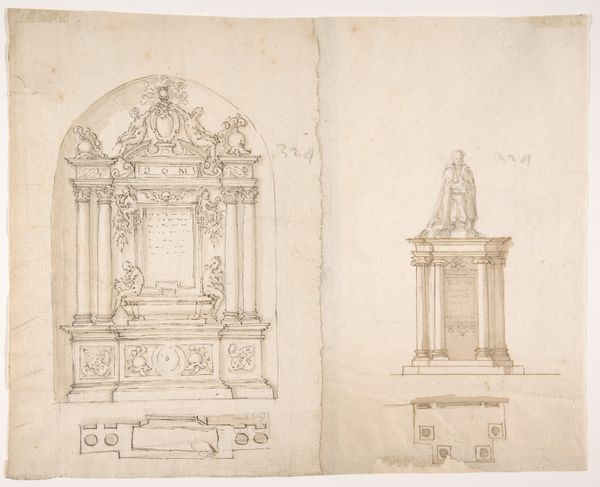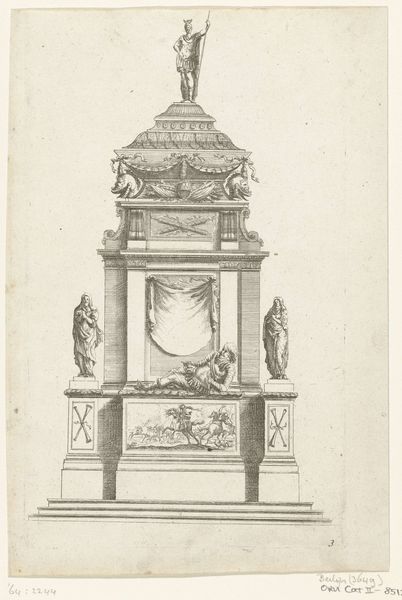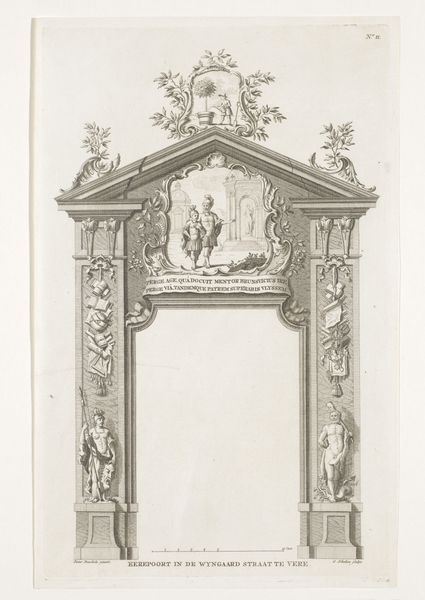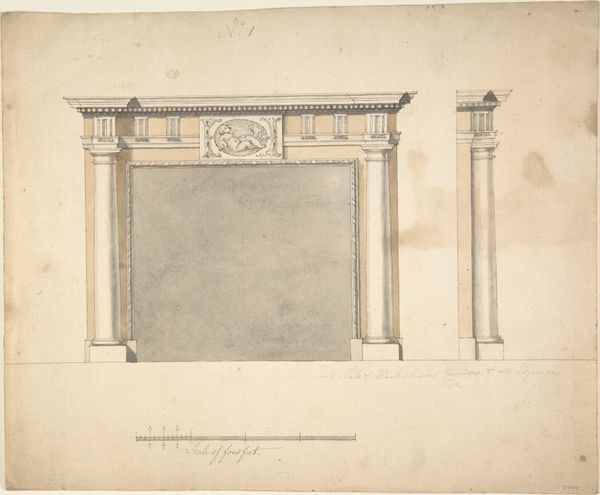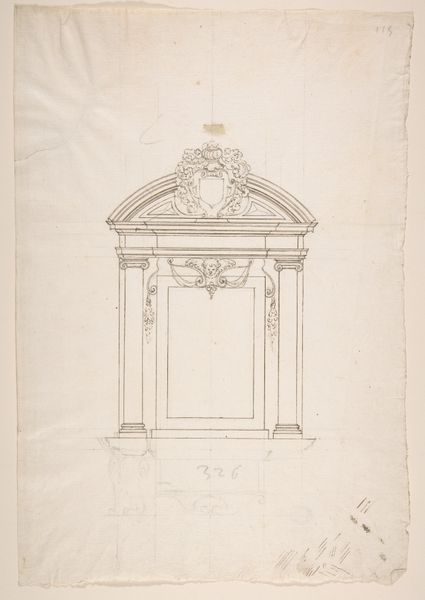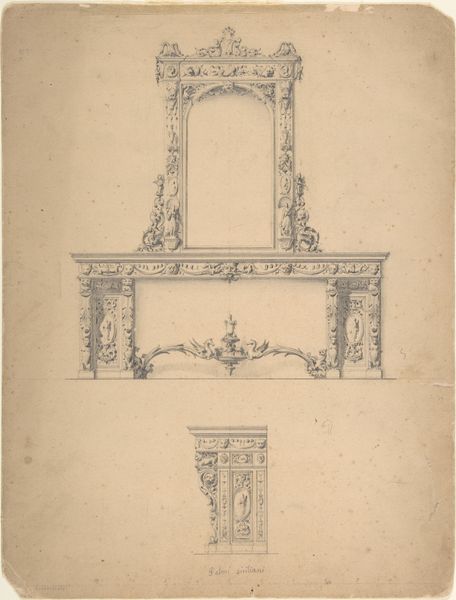
drawing, print, architecture
#
architectural sketch
#
drawing
#
aged paper
#
toned paper
#
light pencil work
# print
#
pen sketch
#
etching
#
personal sketchbook
#
ink drawing experimentation
#
pen-ink sketch
#
arch
#
pen work
#
architecture
Dimensions: sheet: 11 x 16 5/8 in. (27.9 x 42.2 cm)
Copyright: Public Domain
Curator: What immediately strikes me about this drawing is its almost ghostly lightness. The details, rendered in a pale ink on aged paper, suggest something delicate, ephemeral. Editor: Indeed. This piece, currently held at the Metropolitan Museum of Art, is entitled "Two pedestals with classical scenes" and is believed to have been created sometime between 1700 and 1800 by an anonymous hand. Look closer at how it exemplifies a study of form through carefully etched lines. Notice how each scene contains a classical narrative in detailed miniature. Curator: I am captivated by the way the materiality emphasizes a tension. This aged paper betrays the careful labor involved; each pedestal is carefully considered, revealing dedication, but what are the real intentions here? Are we supposed to accept this aged aesthetic to provide artistic legitimacy for design, or what? Editor: That's an interesting proposition. The meticulous use of line, particularly in the ornamentation on the pedestal on the right, suggests a focus on symmetry and proportion. There's a clear understanding of classical principles at play. The scene contained in each frame—how does the etching itself contribute to your material analysis? Curator: These miniature scenes seem almost like acts of repetition, emphasizing the commodification of these classical scenes for wealthy patronage. Consider the use of this ink with an etchant, for instance: the economic background would have to be considered to justify the material cost for something like architectural design, or mass-produced designs with an appearance of prestige. Editor: A point well taken! Yet, regardless of the purpose behind its production, this study possesses its own intrinsic elegance through composition. The stark contrast between the ornate pedestal and the more simple one draws the eye and leads to intriguing points about craftsmanship and classical interpretation in an emerging market economy of decorative goods. Curator: Thinking through a materialist lens, I keep considering who and where the final pieces went. Hopefully, as technology expands and allows us more room for non-destructive material dating practices, we'll better understand who commissioned the original bases. Editor: It has been a fascinating exchange with plenty of avenues for thought to further our critical investigations, if I can add. Thank you!
Comments
No comments
Be the first to comment and join the conversation on the ultimate creative platform.
